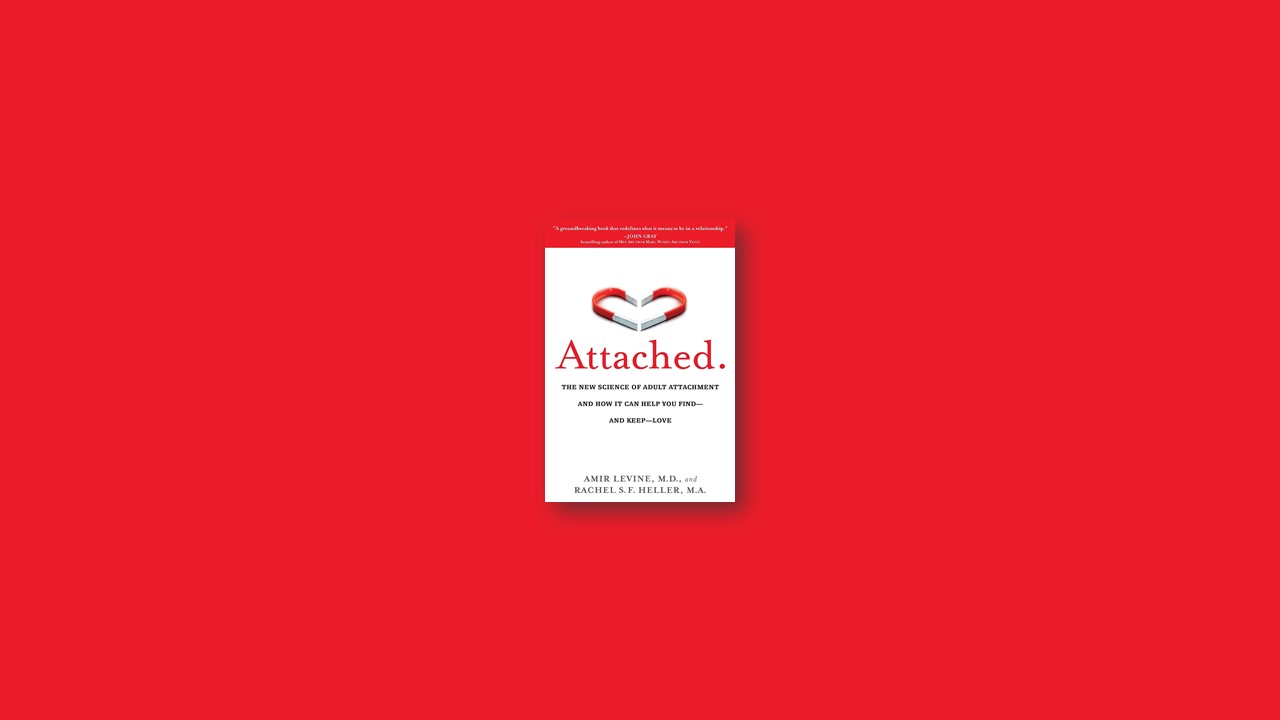Dependency Is Not a Bad Word
Numerous studies show that once we become attached to someone, the two of us form one physiological unit. Our partner regulates our blood pressure, our heart rate, our breathing, and the levels of hormones in our blood. We are no longer separate entities. The emphasis on differentiation that is held by most of today’s popular psychology approaches to adult relationships does not hold water from a biological perspective. Dependency is a fact; it is not a choice or a preference.
Having a partner who fulfills our intrinsic attachment needs and feels comfortable acting as a secure base and safe haven can help us remain emotionally and physically healthier and live longer. Having a partner who is inconsistently available or supportive can be a truly demoralizing and debilitating experience that can literally stunt our growth and stymie our health. The rest of the book is about how to go about finding a partner who can become your secure base, becoming that kind of partner yourself, and helping your existing partner take on this life-altering role.
Step One: What Is My Attachment Style?
- If you feel comfortable with intimacy with your romantic partner (i.e., are low on intimacy avoidance) and don’t obsess much about the relationship or about your partner’s ability to love you back (i.e., are low on relationship anxiety) but coast along with it—you’re probably secure.
- If you crave intimacy and closeness (i.e., are low on intimacy avoidance) but have a lot of insecurities about where the relationship is going, and little things your partner does tend to set you off (i.e., are high on relationship anxiety)—you’re probably anxious.
- If you feel uncomfortable when things become too close and intimate and value your independence and freedom more than the relationship (i.e., are high on intimacy avoidance) and don’t tend to worry about your partner’s feelings or commitment toward you (i.e., are low on relationship anxiety)—you’re probably avoidant.
- If you are both uncomfortable with intimacy and very concerned about your partner’s availability, you have a rare combination of attachment anxiety and avoidance. Only a small percentage of the population falls into this category and if you are one of them, you can benefit from information on both the anxious and avoidant attachment styles.
Step Two: Cracking the Code—What Is My Partner’s Style?
If you’re still in doubt, here are what we call the five Golden Rules to help you home in on his or her attachment style:
- Determine whether s/he seeks intimacy and closeness.
- Assess how preoccupied s/he is with the relationship and how sensitive s/he is to rejection.
- Don’t rely on one “symptom,” look for various signs.
- Assess his/her reaction to effective communication.
- Listen and look for what he or she is not saying or doing.
Living with a Sixth Sense for Danger: The Anxious Attachment Style
- Acknowledge and accept your true relationship needs.
- Recognize and rule out avoidant prospects early on.
- A new way of dating: Be your authentic self and use effective communication.
- The abundance philosophy.
- Give secure people a chance.
There is no one for whom attachment theory has more to offer than men and women with an anxious attachment style. Although you suffer the consequences of a bad match and an activated attachment system more intensely, you also stand to gain the most from understanding how the attachment system works, which relationships have the capacity to make you happy, and which situations can make you a nervous wreck. We have witnessed people who have managed to walk away from loneliness to find the companionship they longed for, using the principles outlined in this chapter. We’ve also witnessed people who have been in long-term relationships that brought out the worst in them, but understanding and utilizing attachment principles marked the beginning of a new phase of their relationship—a more secure phase.
Keeping Love at Arm’s Length: The Avoidant Attachment Style
- Learn to identify deactivating strategies.
- De-emphasize self-reliance and focus on mutual support.
- Find a secure partner.
- Be aware of your tendency to misinterpret behaviors.
- Make a relationship gratitude list.
- Nix the phantom ex.
- Forget about “the one.”
- Adopt the distraction strategy
Getting Comfortably Close: The Secure Attachment Style
One of the most important roles we play in our partners’ lives is providing a secure base: creating the conditions that enable our partners to pursue their interests and explore the world in confidence. Brooke Feeney and Roxanne Thrush, of Carnegie Mellon University, in a study published in 2010, found that three specific behaviors underlie this broad term. You too can provide a secure base by adopting the following secure behaviors:
- Be available: Respond sensitively to their distress, allow them to be dependent on you when they feel the need, check in with them from time to time, and provide comfort when things go wrong.
- Don’t interfere: Provide behind-the-scenes support for their endeavors. Help in a way that leaves them with the initiative and the feeling of power. Allow them to do their own thing without trying to take over the situation, micromanage, or undermine their confidence and abilities.
- Encourage: Provide encouragement and be accepting of their learning and personal growth goals. Boost their self-esteem.
When Abnormal Becomes the Norm: An Attachment Guide to Breaking Up
The following nine strategies, using attachment principles, will help you get through the painful experience of ending a relationship.
- Ask yourself what life is like for you in the “inner circle.” If you can’t decide to break up, ask yourself whether you are treated like royalty or like the enemy. If you’re the enemy, it’s time to go.
- Build a support network ahead of time. Start to open up to friends and family about what your relationship is really like. This will rekindle friendships you might have neglected due to shame or plain misery, and will also prepare them to help you when you make your move
- Find a comforting, supportive place to stay for the first few nights. You’ll need all the support you can get at first. The temptation to rebound is very strong. Parents, siblings, or your closest friends can help you control that urge.
- Get your attachment needs met in other ways. Recruit support from the people closest to you and seek diversions like a massage, plenty of exercise, and comforting, healthy food. The more you are able to quiet down your attachment system, the less painful the separation will be.
- Don’t be ashamed if you slip up and go back to “the scene of the crime.” Obviously you’re better off not reestablishing contact with your ex, but if you end up doing so, don’t beat yourself up. It is very important that you be compassionate with yourself. The worse you feel about yourself, the more you’ll want to go back to the false safety of the bad relationship you were in. Your attachment system gets activated more when you feel bad about yourself and an activated attachment system means wanting to renew contact even more.
- If you’re having a hard time, don’t feel guilty. Remember, the pain is real! Friends might urge you to forget about your ex, stop feeling sorry for yourself, and move on quickly. But we know that the pain you’re feeling is real, so don’t deny it. Instead, be kind to yourself and find ways to pamper your body and soul. You would if you had a broken leg!
- When you get flooded with positive memories, ask a close friend for a reality check. Remind yourself that your attachment system is distorting your perspective on the relationship. Ask a friend to remind you how things really were. Even if you sometimes miss or idealize your ex, reality will slowly sink in.
- Deactivate: Write down all the reasons you wanted to leave. Your objective is to deactivate your attachment system. The best way to do so is to recall the bad moments in the relationship, and the best way to keep them fresh is to write them down. Take a peek at the list when those invasive positive memories creep into mind.
- Know that no matter how much pain you’re going through now, it will pass. Most people recover very well from a broken heart and eventually move on to greener pastures!
Effective Communication: Getting the Message Across
Like the concept of effective communication, the principles are also very straightforward:
- Wear your heart on your sleeve. Effective communication requires being genuine and completely honest about your feelings. Be emotionally brave!
- Focus on your needs. The idea is to get your needs across. When expressing your needs, we are always referring to needs that take your partner’s well-being into consideration as well. If they end up hurting him or her, you’re sure to get hurt too; after all, you and your partner are an emotional unit. When expressing your needs, it’s helpful to use verbs such as need, feel, and want, which focus on what you are trying to accomplish and not on your partner’s shortcomings:
- “I need to feel confident in the relationship. When you chat up the waitress, I feel like I’m on thin ice.”
- “I feel devalued when you contradict me in front of your friends. I need to feel that you respect my opinions.”
- “I want to know I can trust you. When you go to bars with your friends, I worry a lot that you’ll cheat on me.”
- Be specific. If you speak in general terms, your partner may not understand exactly what you really need, which may lower his or her chances of getting it right. State precisely what is bothering you:
- When you don’t stay the night . . .
- When you don’t check up on me every day . . .
- When you said you loved me and then took it back . . .
- Don’t blame. Never make your partner feel selfish, incompetent, or inadequate. Effective communication is not about highlighting the other person’s shortcomings, and making accusations will quickly lead you away from the point and into a dueling match. Make sure to find a time when you’re calm to discuss things. You’ll find that attempting to use effective communication when you’re on the verge of exploding is a contradiction in terms—you’ll most likely sound angry or judgmental.
- Be assertive and nonapologetic. Your relationship needs are valid—period. Though people with different attachment styles may not see your concerns as legitimate, they’re essential for your happiness, and expressing them authentically is crucial to effective communication. This point is especially important if you have an anxious attachment style, because our culture encourages you to believe that many of your needs are illegitimate. But whether they are legitimate or not for someone else is beside the point. They are essential for your happiness, and that is what’s important.


